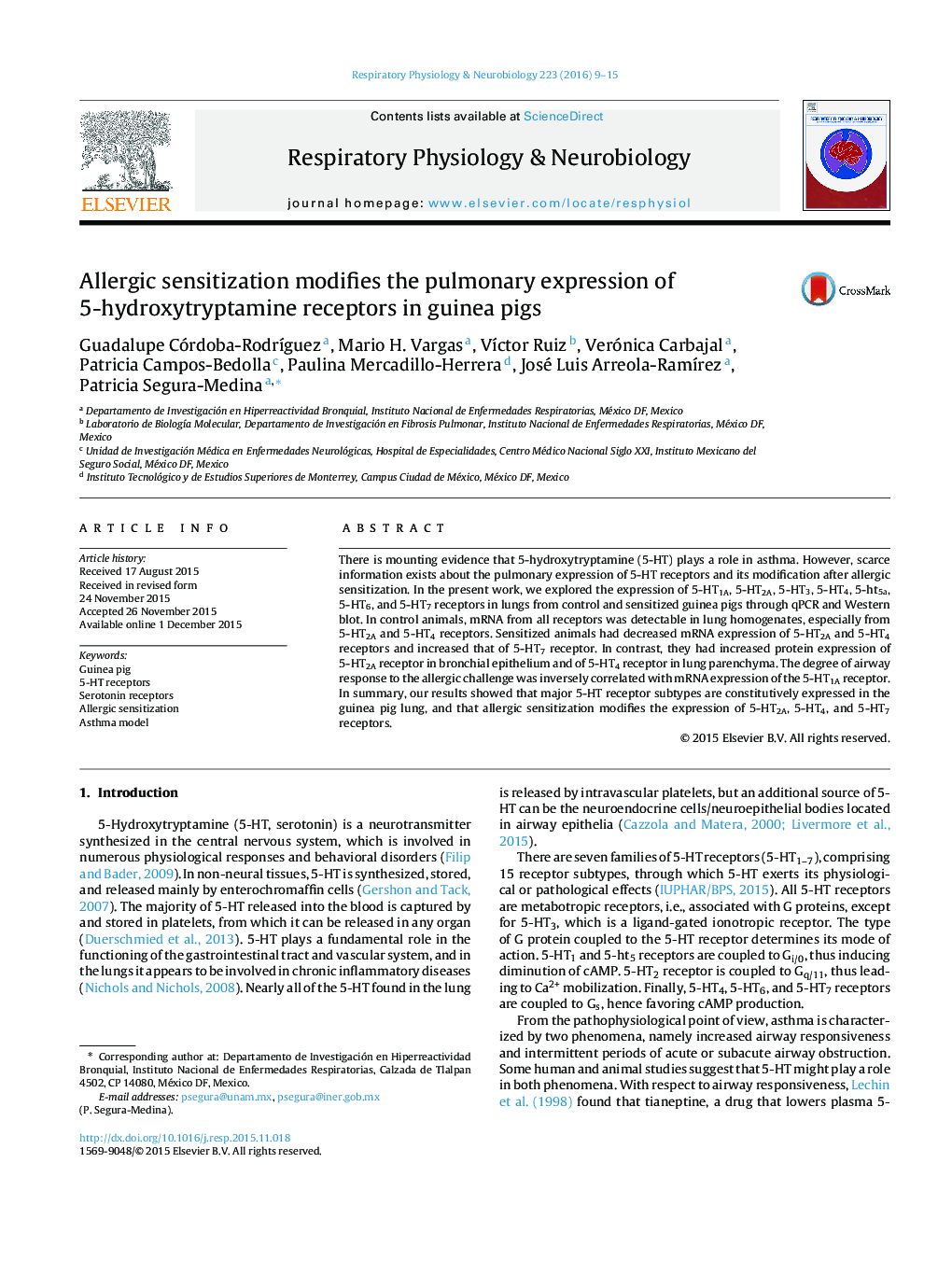| Article ID | Journal | Published Year | Pages | File Type |
|---|---|---|---|---|
| 5925861 | Respiratory Physiology & Neurobiology | 2016 | 7 Pages |
â¢There is mounting evidence that 5-hydroxytryptamine (5-HT) plays a role in asthma.â¢Major 5-HT receptor subtypes are constitutively expressed in the guinea pig lung.â¢Allergic sensitization modifies the expression of 5-HT2A, 5-HT4 and 5-HT7 receptors.â¢The role of 5-HT in the pathogenesis of asthma might lead to novel promising therapeutic approaches in the treatment of allergic airway diseases.
There is mounting evidence that 5-hydroxytryptamine (5-HT) plays a role in asthma. However, scarce information exists about the pulmonary expression of 5-HT receptors and its modification after allergic sensitization. In the present work, we explored the expression of 5-HT1A, 5-HT2A, 5-HT3, 5-HT4, 5-ht5a, 5-HT6, and 5-HT7 receptors in lungs from control and sensitized guinea pigs through qPCR and Western blot. In control animals, mRNA from all receptors was detectable in lung homogenates, especially from 5-HT2A and 5-HT4 receptors. Sensitized animals had decreased mRNA expression of 5-HT2A and 5-HT4 receptors and increased that of 5-HT7 receptor. In contrast, they had increased protein expression of 5-HT2A receptor in bronchial epithelium and of 5-HT4 receptor in lung parenchyma. The degree of airway response to the allergic challenge was inversely correlated with mRNA expression of the 5-HT1A receptor. In summary, our results showed that major 5-HT receptor subtypes are constitutively expressed in the guinea pig lung, and that allergic sensitization modifies the expression of 5-HT2A, 5-HT4, and 5-HT7 receptors.
